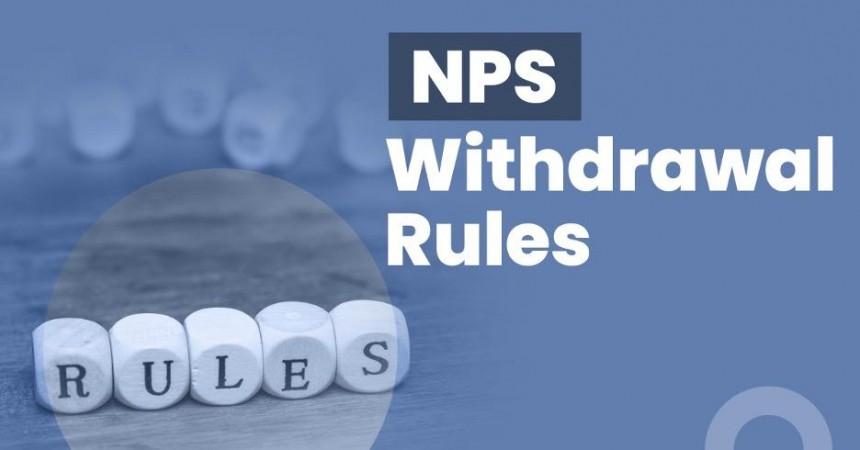
The NPS, or National Pension System, is a primary retirement planning instrument that offers an opportunity to build a corpus for retirement. Upon retirement, the subscriber can utilise funds from their NPS account. However, sometimes, an inevitable expense may come up before retirement when they may want to access funds they accumulated for retirement. That is when it becomes necessary to understand the applicable NPS withdrawal rules. Here is all you need to know.
Limits and Frequency of NPS Withdrawals
An NPS account is a retirement planning scheme that gives financial access at and after retirement. Still, it is the account holder's money, and they might want to access the accumulated corpus before retirement for an inevitable expense they need to cover. With an NPS login, they can evaluate the money in the account and request a withdrawal according to the applicable rules. The most important rule is that an account holder can partially withdraw the funds only after 3 years of NPS registration. Here are some other applicable limits for NPS partial withdrawal:
- An NPS account holder can withdraw funds from their NPS account only for a maximum of three times during the account tenure.
- At any time, subscribers can withdraw up to 25% of their individual NPS contribution, excluding their employer's part.
- An account holder can withdraw up to 25% of their contributions, 3 times in the entire life time of holding an NPS PRAN.
Conditions for NPS Withdrawal
Upon NPS registration, one must deposit money into their NPS account regularly until retirement. However, they might need money for specific purposes before maturity. According to the latest NPS withdrawal rules, an account holder can withdraw before retirement only under the following circumstances:
- Children's marriage or higher education, including legally adopted children
- Purchasing or constructing a residential flat or house in the account holder's name or jointly with the spouse
- Incidental or medical expenses arising out of an incapacitation or disability
- Skill development or self-development activities according to the PFRDA rules
- Start-up or venture establishment according to the PFRDA guidelines
- Specific illnesses involving treatment and hospitalisation, either for the account holder, their spouse, children, or dependent parents
According to the NPS withdrawal rules, an account holder can withdraw NPS funds for fourteen specific diseases, including the following:
- Cancer
- End-stage kidney failure
- Primary pulmonary arterial hypertension
- Major organ transplant
- Multiple sclerosis
- Heart valve surgery
- Aorta graft surgery
- Coronary artery bypass graft
- Myocardial infarction
- Stroke
- Total blindness
- Coma
- Paralysis
- A serious or life-threatening accident
- Medical expenses for treatment of COVID-19.
The Latest NPS Withdrawal Rules Announced in November 2023
The PFRDA has proposed a systematic lump sum withdrawal system that allows subscribers to get regular payments instead of a lump sum withdrawal from the NPS investment. According to the latest rules, at retirement, NPS account holders can withdraw up to 60% of their maturity amount at 1, 3, 6, or 12-month intervals in installments till they reach 75 years of age. Earlier, they could withdraw only 60% of their NPS funds as lumpsum Tax free at maturity and use the remaining 40% as annuity.
Advantages of the New NPS Withdrawal Guidelines
The major benefit of the latest NPS withdrawal guidelines is to enhance the regular cash flow. Instead of relying on the 40% corpus for annual payouts, account holders can now use 60% to generate regular earnings like salary. Additionally, they can prevent the adverse effects of a bearish market at retirement. Choosing a lump sum mode leads to lower returns while staggering the payout over time can hedge against the bearish market impact. Please remember that the 60% lumpsum income is tax-free, while annuity income is taxable under the investment tax slab.
How do you Withdraw Funds from the NPS Account?
These are the steps to withdraw funds from the NPS account:
- Visiting the NSDL website and entering the NPS login details
- Accessing the NPS claim form
- Submitting the form through the NSDL website or offline at a POP or nodal office
The account holders can submit the claim on their own. If they are ill, their family members can submit the withdrawal request.
Initially launched in 2004 for government employees, all Indian residents and non-resident individuals can now benefit from the NPS scheme. After understanding the NPS withdrawal rules, one can use the scheme to their maximum advantage and receive the expected returns and benefits.
















